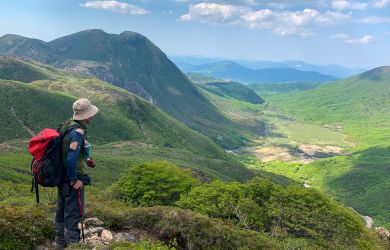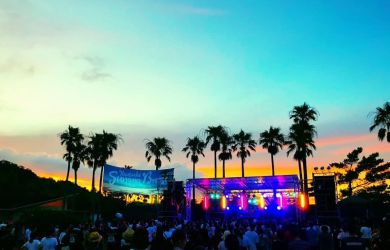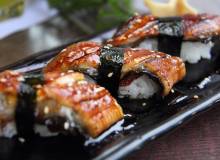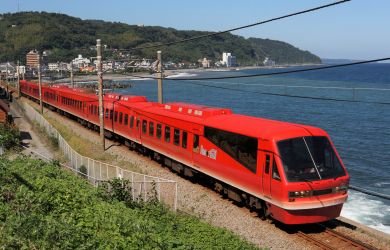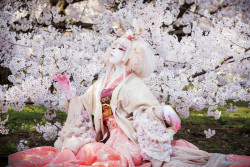
November 13, 2003
Riverside Retreat
The rustic Okayama town of Takahashi offers the casual visitor a release from the world. Stephen Mansfield enjoys the time on his hands.
By Metropolis
Originally published on metropolis.co.jp on November 2003

Photos by Stephen Mansfield
There is something to be said for Japan’s provincial towns. They rarely host more than a trickle of visitors, and the spoils from tourism are never quite enough to disfigure a town or completely vulgarize its heritage. Takahashi in Okayama Prefecture, known until the Meiji Era as Bichu-Matsuyama, is one such place that has benefited from obscurity. The 55-minute train journey to Bichu-Takahashi station from Okayama City, much of which hugs the Takahashigawa, a shallow, winding river well stocked with ayu (sweetfish), a local specialty that is grilled or, often as not, encrusted in salt, creates a favorable initial impression, although nobody could accuse the town of not milking its assets.
One despairs at times in Japan at the way everything is turned into a business opportunity, but Takahashi does have qualities that override such cynical thoughts. Catering to small-scale tourism, in any case, does have its advantages. Many of the sights, for example, are marked and signposted in English, suggesting that at least a trickle of foreigners-I saw none during my stay here-make it to Takahashi to see its modestly impressive sights.
Castle in the air
One of Takahashi’s main drawing cards is its well-appointed, much-photographed castle. Built into the higher reaches of Mount Gagyuzan, Bichu-Matsuyama-jo stands 430 meters and is Japan’s highest castle, a fact that the town has not been slow to exploit. The construction of the original fort, an awesome engineering task given the altitude and terrain, was undertaken during the mid-13th century when the town was enjoying great prosperity under the warlord Akiba Saburoshigeobu. Extended during the Warring States Period, this near-impregnable castle is fortified at lower elevations by samurai villas and farmhouses strung along the foot of the mountain. Time and time again, these acted as a first line of defense. Most of the residences in this district known as Ishibiya-cho, raised above the lanes on stone platforms, are still occupied by descendants of Takahashi’s old samurai families.

It’s a stiff hike up to the top, even for those in sound health. I did the hour-long climb at the height of summer, sharing the walk with swarms of mosquitoes and the occasional serpent. A taxi will get you most of the way if you prefer, but there is still a 15-minute ascent from the parking lot, an obstacle that reduces the number of visitors to the top. The view from the castle terraces for those who make it is matchless. With few relics of significance, and a very constricted view through its archery windows, the castle donjon is hardly worth the extra cost extracted. Descending the overgrown slopes, I was reminded of Basho’s haiku about forgotten warriors-A mound of summer grass/Are warriors’ heroic deeds/Only dreams that pass? In this once martial valley town, now hibernating peacefully in the mountains of Bichu, you almost expect to come across a rusting helmet in the grass, or a ruined halberd jammed between stones in the river.
More feudal estates face the Kouya River, a shallow stream that runs through the center of Takahashi, its bridges mounted with miniature stone shrines. The grand wood-and-plaster outer walls of these villas contrast with smidgens of Meiji Era Occidental architecture. Takahashi Church and the wooden Takahashi Elementary School, now serving, along with the Samurai House Museum back in Ishibiya-cho, as local history museums, are well-preserved examples of this style. The museums are recommended for the glimpse they provide into the Meiji Era’s infatuation with Western science and design, a fascination with the new technology of the day, and a passion to own these new inventions. Along with the more predictable mishmash of portable shrines, bits of undated lacquerware and faded woodblock prints, are exhibits that include an old Morse code set, period clocks and a microscope, standing alongside farm implements and a fine collection of monochrome photos of the town.
Garden of the master
Although much is made of its castle, samurai dwellings and the cherry-lined Kouya River, the town’s finest offering is the stone garden attached to Raikyu-ji temple, created by a local lord, Kobori Enshu, who was to become one of Japan’s foremost designers of karesansui (dry landscape gardens), as well as an advocate of the tea ceremony. No one seems quite sure about the temple’s date of origin but, judging from the fact that it was rebuilt on the orders of the shogun Ankoku in 1339, its history is clearly an illustrious one.

Enshu, a master at the placement of stone, gravel and rocks, finished the garden in 1609. Renowned for its Zeninshiki, or Zen temple form, the garden is also known as Tsurukame Garden, on account of its crane and turtle island configuration. It is said to follow the so-called Horai-style, a form that emphasizes harmony and spiritual peace in both the dynamics of the garden itself and the onlooker. Like all of the most accomplished dry landscape gardens, the Tsurukame induces a dual response: The casual visitor experiences an idleness, a release from the world, the luxury of time on one’s hands, while the studious visitor is cast into a more pensive mood.
While I was pondering these two states of mind, Raikyu-ji’s resident abbot glided by in a white undervest, clearly engaged in some physical task about the grounds. His small daughter sat at the entrance to the temple, dispensing tickets to the odd visitor-only one other person came during the hour I spent there. A faint smell of fried pork and tobacco wafted across the garden stones from the family quarters, reminding me that head priests in Japan are not obliged to take vows either of celibacy or serious abstinence, that their sphere is as firmly in the temporal as the spiritual. I was also reminded of an image by the 15th-century poet and holy man Ikkyu: “We sit in the pavilion, a pleasure girl and this Zen monk.”
Getting There
Okayama City is a 75min flight from Haneda Airport (around ¥55,000 r/t), or just over 3hr by bullet train (¥16,000 one way) from Tokyo. Bichu-Takahashi stn is a 55min local train ride from Okayama City, making for an excellent side trip. It’s possible to spend the morning in Takahashi and the late afternoon in Kurashiki, as both are located on the JR Hakubi line.
Where to stay
The Takahashi Kokusai Hotel (tel: 0866-21-0080), near the station, is surprisingly grand for these parts. For room rates, visit the hotel website www.tkh.co.jp or email info@tkh.co.jp. There is also the friendly Takahashi Youth Hostel (tel: 0866-22-3149) near the Raikyu temple. For a list of ryokan in the area, check out www.ryokan.or.jp/list_chugoku.html.
More information
Maps and other information are available at a travel agency that doubles as a tourist center near the station. Souvenir shops and restaurants serving Japanese sweets, desserts and other snacks can be found near a large parking lot serving bus groups. For information in English, visit the Okayama Prefecture home page at www.pref.okayama.jp/kikaku/kokusai/momo/e/ or the Japan National Tourist Organization’s website at www.jnto.go.jp.
[geo_mashup_map]

